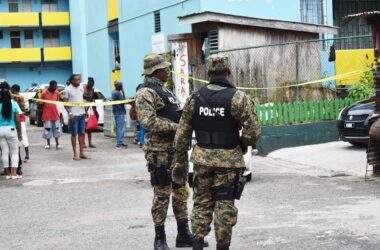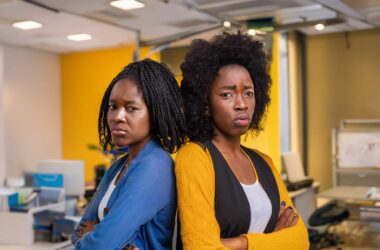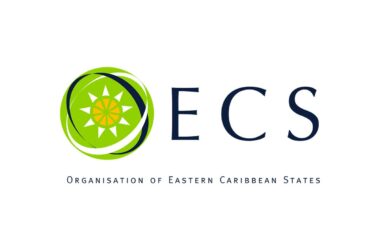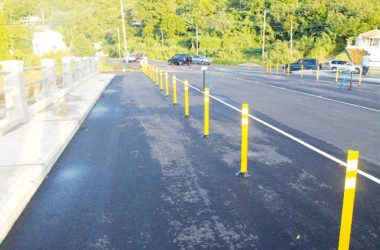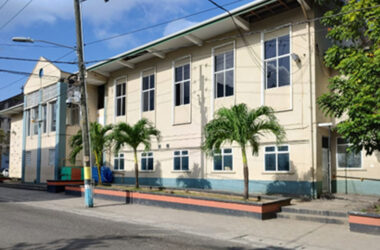The decision taken by the Ministry of Education in conjunction with the Ministry of Health to reopen schools for face-face teaching has developed into a national debate on all media platforms in the country over the past few days.
While we recognize that in today’s climate the decision taken by the authorities was not an easy one to make as there are also compelling reasons not to have in-face teachings at both primary and secondary schools, we decided, this time around, to lean on the wisdom of the Chief Medical Officer and her team, which we believe has guided this nation through this pandemic admirably.
We believe too, that the Ministry of Education feels deeply for the nation’s children and would do all in its power to make schools as COVID safe as possible. Hence we also lean on the wisdom of the Ministry at this time as well.
Some parts of the ongoing debate have been thought provoking while other parts have been nothing but nonsensical outbursts.
Chairman of the National COVID-19 Management Center, Mr. Cletus Springer has joined the debate with comments we believe could shed some light on what prompted the decision by the authorities to reopen school.
We published his comments below in the hope that the debate would generate even more thoughtful insights in how we, as a people, could/should successfully navigate the pandemic.
“You would have heard me say countless times that there are no easy policy decisions regarding Saint Lucia’s Covid-19 response. Cliché or not, that’s the honest truth.
“The decision to open schools for in-person teaching ranks among the toughest of them all.
Concern for the welfare of our school children at a time when Covid-19 infections are soaring is understandable. The fear that children and teachers will pass on the virus to each other is real and cannot be dismissed. It’s natural that as infections rise, so too will the concerns of parents.
So what to do?
“Do we return to on-line learning which we know to be inadequate and which is compromising not only our children’s education but also their mental and emotional development?
Or, do we attempt in-person learning using targeted interventions where, if infections in a particular school may warrant closure that we employ full online or blended learning for that school?
“The use of the latter approach was guided by the following considerations.
1. Our 79 primary schools and 25 secondary schools are all integral parts of their respective communities. If infections in a community is high, it’s likely that infections in schools will also be high. Therefore, what public health benefits will accrue if schools are closed while communities remain “open?”
“The conclusion that was reached on this point was the child—or teacher for that matter—is no safer at home than in the school. Moreover, it was felt because most teachers live in communities where they teach, there’s a strong likelihood that if /when they get infected they will be unable to teach whether online or in-person and so, the learning of children taught by these teachers will also be affected.
2. Is it necessary to close an entire school if infections are limited to one or two classes in that school? Similarly should we close ALL schools when some are not impacted at all? The answers to these questions were found in the following questions. Do we close all supermarkets, or hotels, or offices, or restaurants, when only some of these may be heavily impacted at any time? We don’t!
“Most of our children use the same modes of transportation as most people in the society. Are ALL minibuses grounded if/when a few are linked to infections? They are not!
If schools in the north are hard hit and those in the south are not, do we close all schools?
We should not!
3. For many parents, having their children in school allows them to go to work knowing that their kids are in a safe environment. What of the fate of children who are left alone while their parents are at work? And what is the effect on productivity when parents have no choice but to take their children to their workplaces with them? And what of children who have no learning devices; and/or those who have devices but no internet access? And what of those children whose only meal is through the School Feeding Program?
“Last term we resumed in-person school at a time when the 4th Wave was just coming off its peak. Throughout that time infections across the school system did not exceed 10%. Granted, Omicron is more infectious, but thankfully it’s not sending people to hospital as Delta.
This was some of the thinking that influenced the decision to return to in-person schooling. Are there risks involved? Absolutely! But so long we adults — and here I include teachers—fail to do what’s necessary to keep our children safe at HOME, they will not be safe at SCHOOL. We failed to do our part during the Festive Season to ensure that our kids could safely return to school. But we can atone for our mistakes by re-committing to put our children FIRST AT ALL TIMES.”




